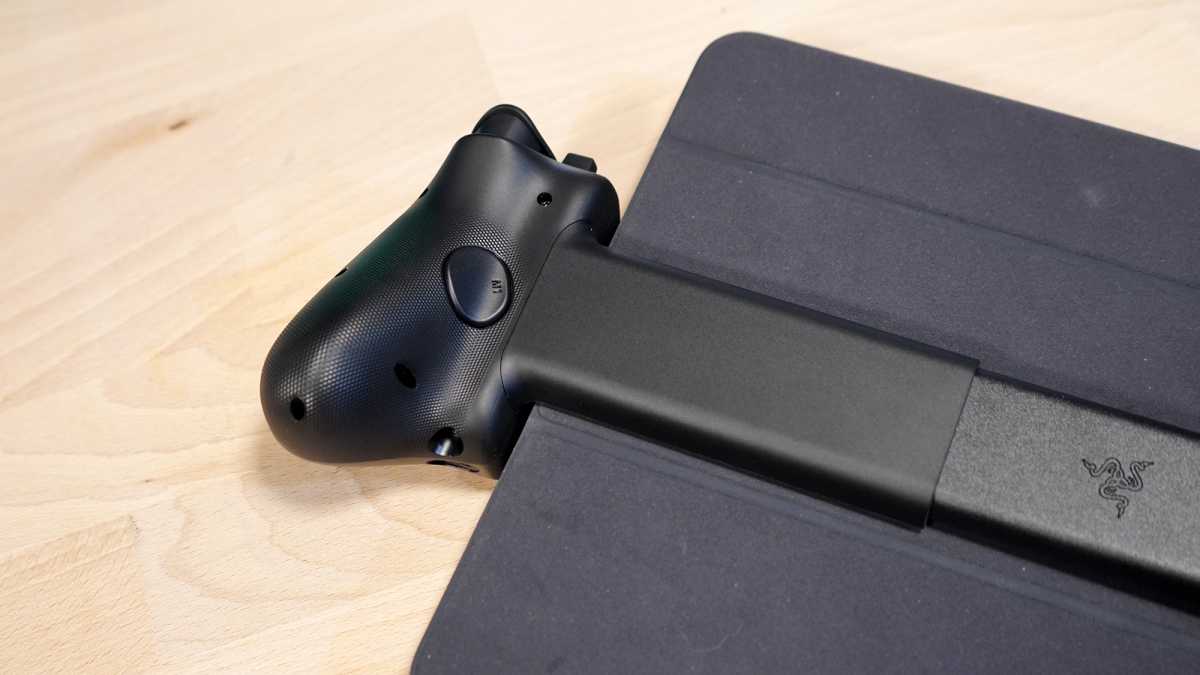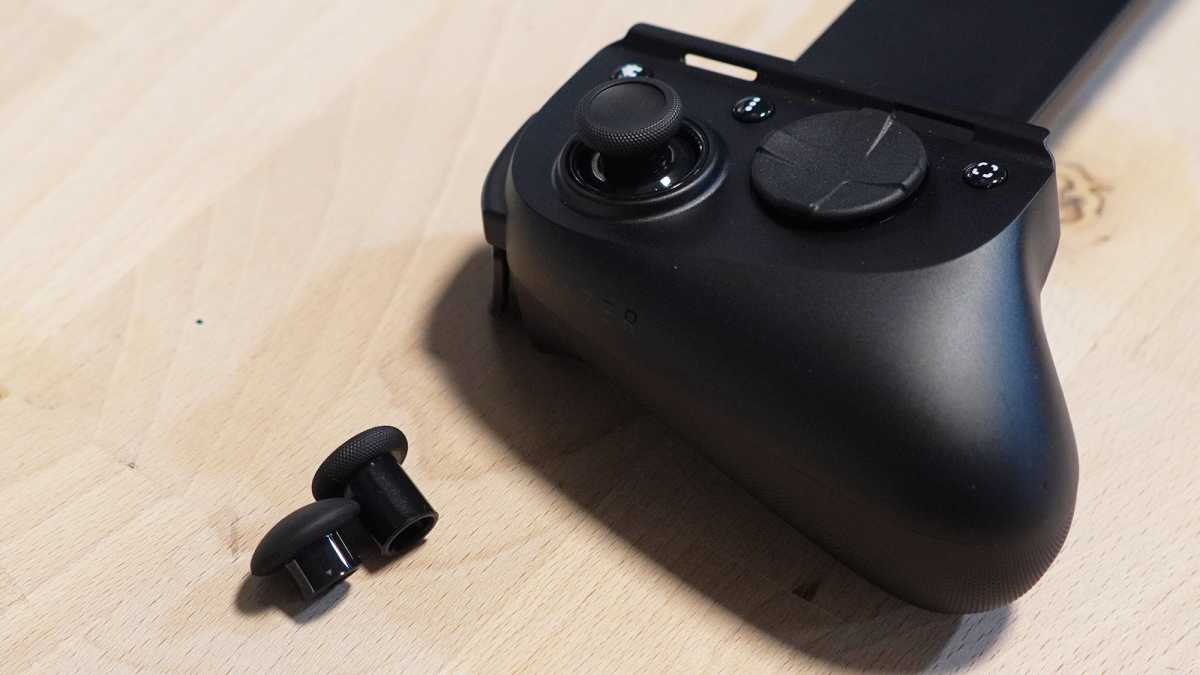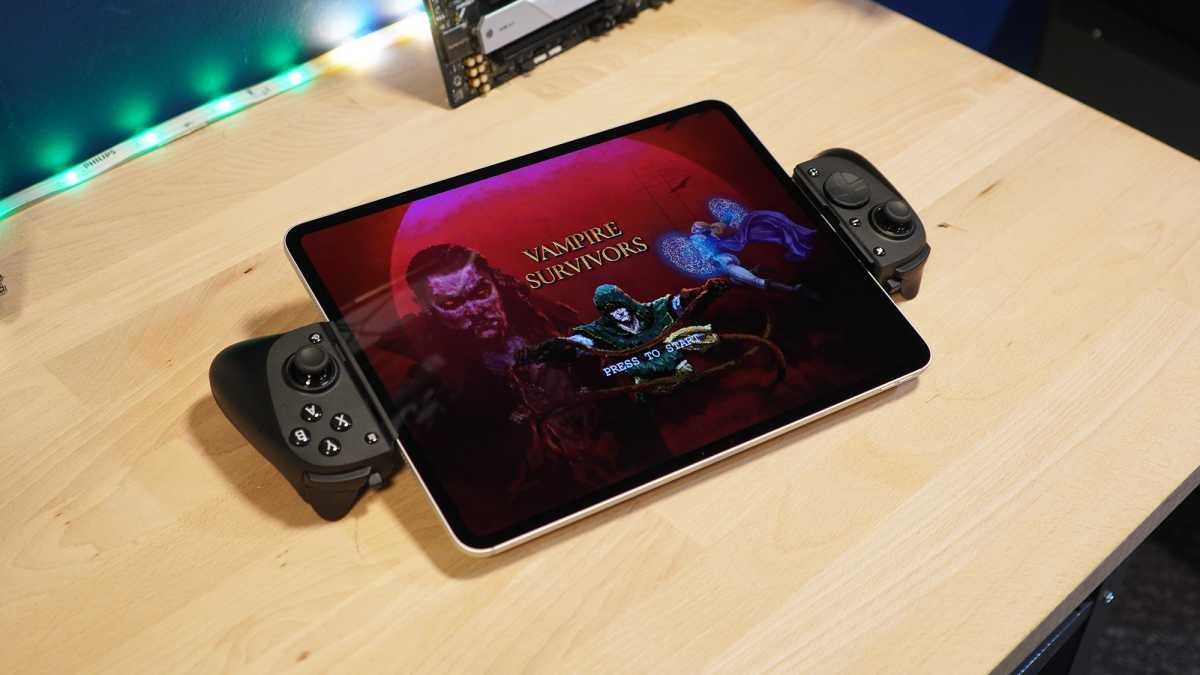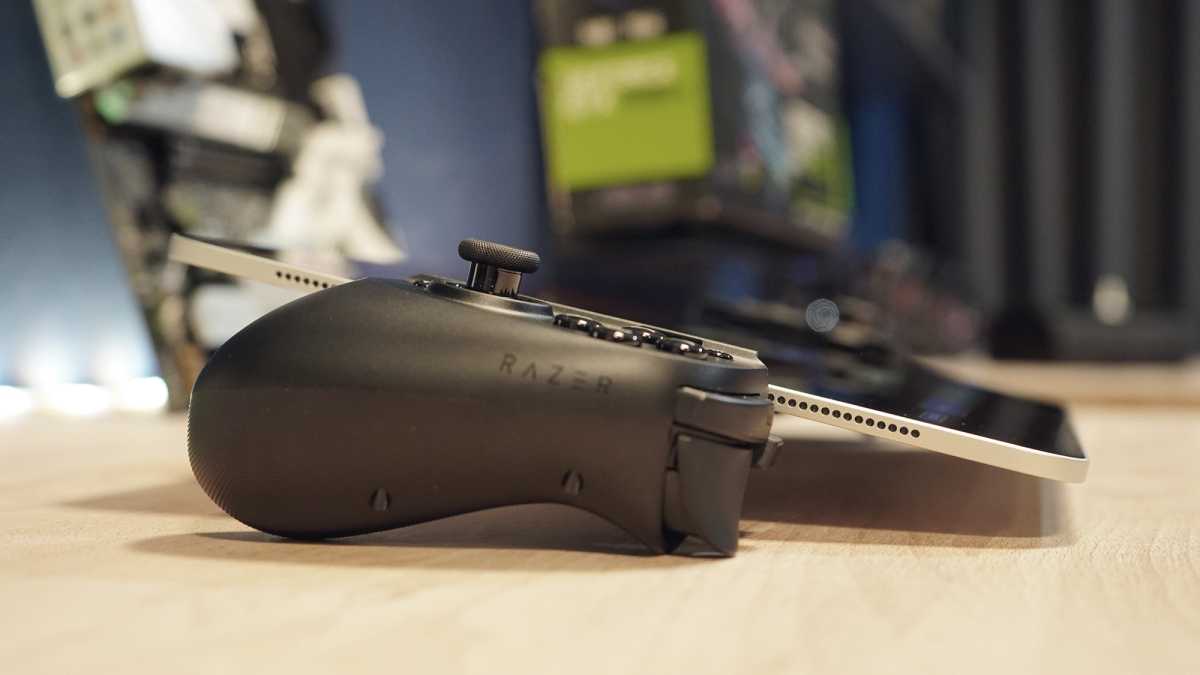Pros
- Big enough for all iPads
- Makes the iPad the largest gaming handheld on the market
- Interchangeable sticks
- Four additional buttons
Cons
- Too big for smartphones and the iPad mini
- Not compatible with Lightning iPads
Our Verdict
If you have an iPad with a USB-C port, you can turn it into one of the largest gaming handhelds on the market with the Razer Kishi V3 Pro XL.
Price When Reviewed
This value will show the geolocated pricing text for product undefined
Best Pricing Today
Best Prices Today: Razer Kishi V3 Pro XL
The Razer Kishi V2 is cool, but it’s a shame it doesn’t fit an iPad. A short time later, Razer introduced the Kishi Ultra, which already fits an iPad mini, and I thought to myself, “Ah, Razer can read my mind!” (I know full well that it doesn’t work like that._
But now Razer has unveiled the next generation of Kishi controllers, and somehow it seems like Razer is… mocking me? “Well, a controller for 13-inch iPads? Are you happy now? Have you had enough now? Have you?” Yes, I know, it still doesn’t work like that, but the new controller with the lavish name “Razer Kishi V3 Pro XL” feels like that. And yes, now I’ve had enough. But more is not possible.

Eugen Wegmann
In many respects, the Razer Kishi V3 Pro XL is a direct update of last year’s Kishi Ultra, even if the name “Ultra” actually sounds like more than “Pro.” In fact, it’s the other way round. The design, workmanship, clicky buttons, and many basic functions are almost identical. That’s why I’ll concentrate on the differences below. For everything else, you should read my review of the Razer Kishi Ultra.
The elephant in the room is, of course, the size of the Kishi V3 Pro XL, although there is also a Kishi V3 and a Kishi V3 Pro. The Kishi XL (I’ll abbreviate it as such from now on) is so big that it won’t fit an iPhone–even the iPhone 16 Pro Max is too small–and not even the iPad mini.
As it has a USB-C port, it is also not compatible with older iPads with a Lightning port. However, it does work with newer iPhones via cable, but this solution is not particularly elegant. The Kishi XL is a pure tablet controller. However, there is room for a full 13-inch iPad, i.e. an iPad Air or an iPad Pro, between the two controller halves. This makes these two iPads, in combination with the Kishi XL, by far the largest gaming handheld on the market.
For comparison: the largest handheld currently available, the Lenovo Legion Go S, has a screen diagonal of 8.8 inches (approx. 22 cm). With the Nitro Blaze 11, Acer has a handheld with a screen diagonal of just under 11 inches (approximately 28 centimetres) up its sleeve, but this is not yet on the market. The large version of the iPad Air and iPad Pro, on the other hand, has a screen diagonal of 13 inches, or around 33 centimetres.
Even if the size of the iPad cannot be directly compared with the handhelds mentioned above, as it has a different aspect ratio, the iPad is simply outstanding in this handheld format.

Eugen Wegmann
Apart from the size, there are two other notable differences from the Kishi Ultra. The Kishi XL not only has two additional buttons alongside the usual shoulder buttons or triggers (L4, R4), but also a button on the back of each grip that you press with your middle or ring finger (M1, M2). Like L4 and R4, these two buttons can also be assigned as desired in the Razer Nexus app.

Eugen Wegmann
One advantage of the Kishi V3 Pro XL: both analogue sticks can be exchanged. Two additional sticks are included: a concave one with a longer shaft and a convex one, as known from older PlayStation Dualshock controllers (up to Dualshock 3). Although both standard sticks can be replaced, only one of the alternative sticks is included. If you want to fit two convex sticks, you have to buy a second one separately.
Compared to the Kishi Ultra, the Kishi XL lacks one function: the two RGB strips on the sides. Whether this is relevant depends on personal taste. I only noticed it when I looked at the photos in my old test. I’m not a big fan of RGB gimmicks anyway.
Another thing that is not possible with the Kishi V3 Pro XL is to use it as an iPad stand. The iPads that fit into the device are simply too high for the whole thing to be stable. In the case of the Kishi Ultra in combination with the iPad mini, this was probably more of a happy coincidence than a well-thought-out function. Incidentally, the cover picture shows the set-up leaning against a wall. Alternatively, the Kishi V3 Pro XL can also be placed “upside down”–slightly angled, which can work for drawing, for example.
Ergonomically speaking, the Kishi V3 Pro XL has already reached its limits; it is unlikely to get any bigger. Although a 13-inch iPad fits inside, it brings the set-up dangerously close to the limits of comfort. The large screen requires some distance from the face, which, with a total weight of around 900 grams (Kishi XL and 13-inch iPad Pro), becomes noticeable in the long term, not only in the hands, but also in the shoulders. Tablets larger than 13 inches are rare anyway, so the natural limit has probably been reached here.
Probably the biggest drawback of the Razer Kishi V3 Pro XL is the price: it’s $199.95/£199.95 for the (admittedly excellently crafted) controller. If you use one of the larger iPads for gaming and are looking for a high-quality, integrated solution, the Razer Kishi V3 Pro XL is an excellent choice.





